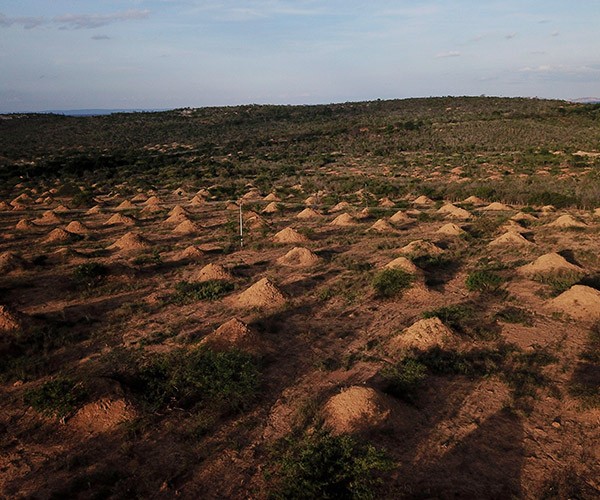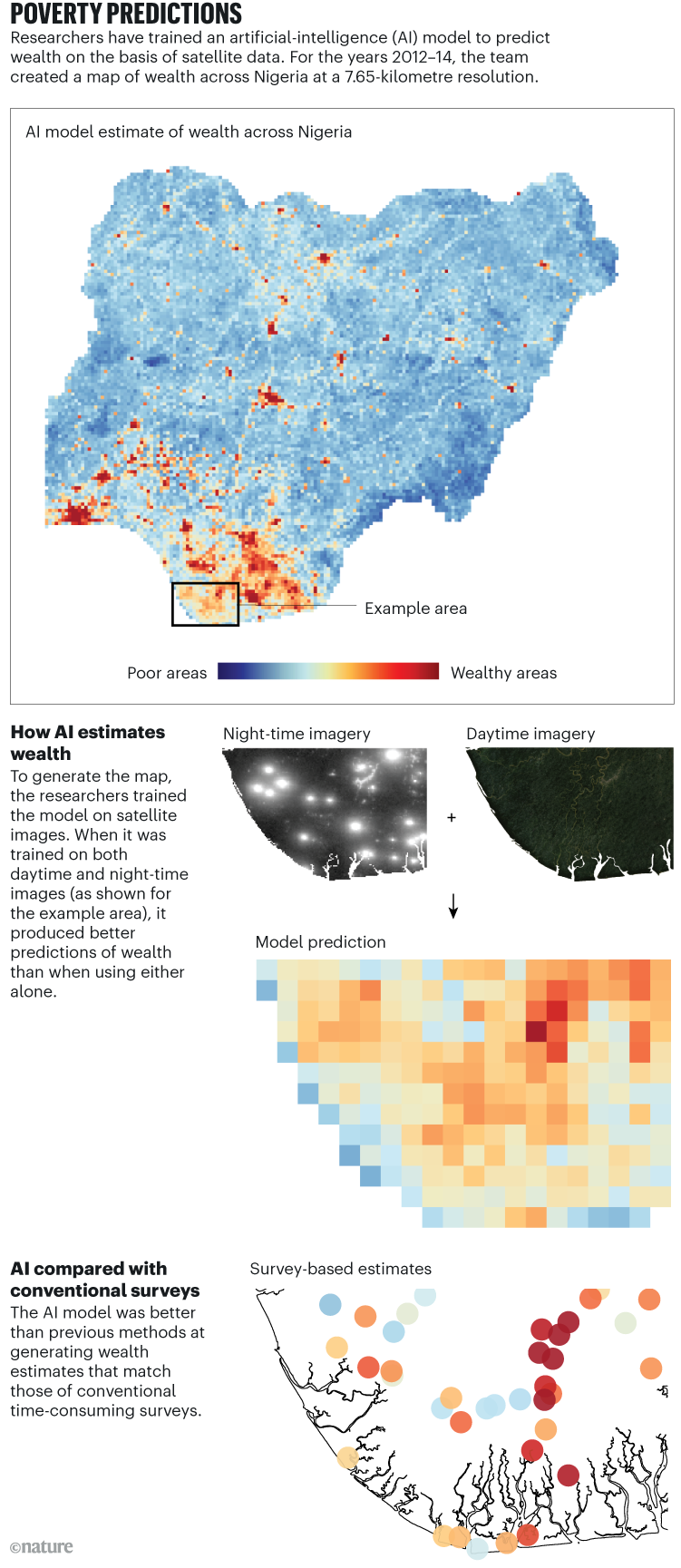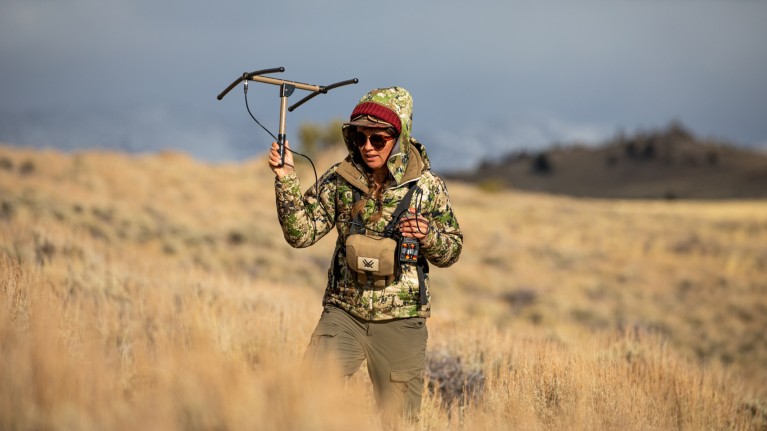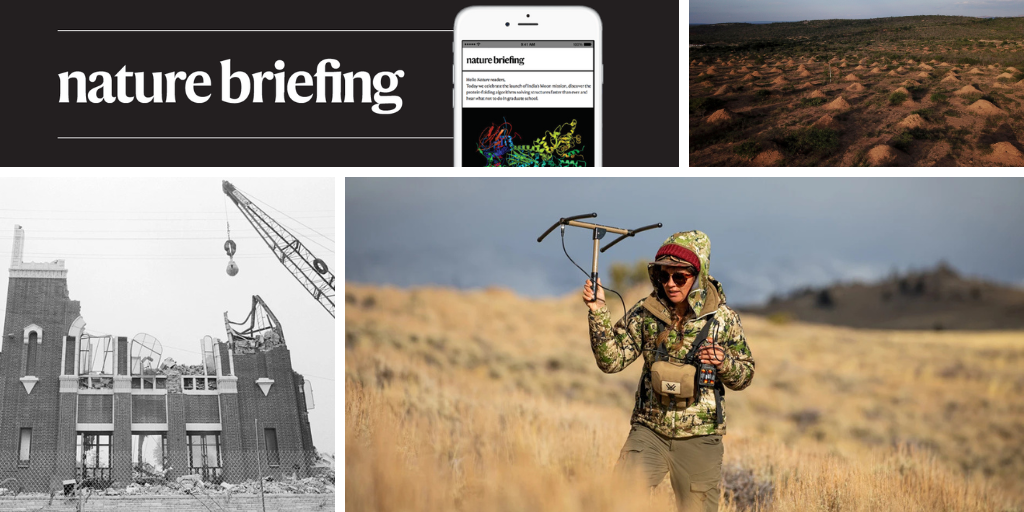Hello Nature readers, would you like to get this Briefing in your inbox free every day? Sign up here.
News

Over thousands of years, tunnel-digging termites (Syntermes dirus) in Brazil have excavated more than10 cubic kilometers of soil — equivalent to 4,000 great pyramids of Giza — in mounds visible from space. (Victor R. Caivano/AP Photo via Alamy)
The first global study of how animals push, pull, dig, scratch and otherwise alter the landscape reveals the enormity of their influence. From beavers creating wetlands to salmon reshaping riverbeds, animals contribute at least 76,000 gigajoules of energy annually to shaping Earth’s surface — a figure that researchers equate to hundreds of thousands of extreme floods. But nearly 30% of the Earth-architect species identified by this study are rare, endemic, or threatened — and losing them could also mean the loss of important geomorphic processes.
Trump’s administration has blocked NASA chief scientist Katherine Calvin and other US officials from participating in a meeting in China this week about a major United Nations climate assessment. The planning meeting is slated to end with the adoption of an outline for the Intergovernmental Panel on Climate Change’s seventh climate assessment. These assessments are used by governments worldwide to shape their climate policies. NASA has also cancelled a contract that funded a team to provide administrative and technical support to the climate-assessment effort, according to a US official.
Features & opinion
Quashing poverty requires knowing who is in need and what their needs are, but collecting those data has long been a time-consuming and costly challenge. Some researchers are turning to artificial intelligence (AI) tools to help plug the gaps. AI can be biased, and could miss people without a digital trail. On the other hand, it can analyse a larger, more representative portion of the population than do household surveys, and identify patterns in data that even specialists could miss, says development economist Ariel BenYishay.

Source: Ref. 6
Most academics agree that the measure of a great researcher should be more than the number of well-cited papers they’ve published in high-impact journals, says educational psychologist Kelly-Ann Allen. Yet publication-based evaluation metrics continue to thrive. Allen proposes an alternative metric, the ‘G+ index’ — G representing the ‘good things’ in academia — that rewards behaviours such as mentorship, collaboration and ethical science practices. “The community faces a choice: maintain the status quo, or experiment with new measures that better align with our values,” Allen writes.
Antibiotics save lives, but they also wreak havoc on the beneficial bacteria that inhabit the human gut. Researchers are pursuing several strategies to protect these helpful microbes. One company has genetically engineered bacteria and nutritional yeast to carry an enzyme that breaks down amoxicillin in the gut without affecting the antibiotic’s ability to fight infection elsewhere in the body. Other scientists have found that high- fibre diets allay antibiotics’ effects on the gut by changing how intestinal microbes metabolize nutrients.
This editorially independent article is part of Nature Outlook: The human microbiome, a supplement produced with financial support from Yakult.
Reference: Nature Biomedical Engineering paper
Image of the week

Anna Ortega tracks deer fawn in western Wyoming as part of her consultancy firm, which she set up in part to be closer to family.Credit: Benjamin Kraushaar
Anna Ortega tracks deer in Wyoming as part of her consulting work analysing wildlife data for academic laboratories, state and federal agencies and conservation non-profit organizations. She is among the PhD scientists who forged a career off the beaten track, far from a research hub or a university town. “I advise PhDs with extreme geographical restrictions to think broadly and widely about what they can do,” says career coach Karen Kelsky, who founded her business after leaving a tenured academic position for family reasons. “It is becoming more normative to not work in academia.” (Nature | 12 min read) (Benjamin Kraushaar)
Today I’m enjoying this beautiful visual exploration of the challenges of using Pinyin romanization for Chinese names by data-visualization specialist Liuhuaying Yang. The work reveals how transliteration can create ambiguity, as thousands of distinct Chinese characters are compressed into just 375 syllables. In some cases, people with different Chinese names end up with the same Pinyin name. “When studying author relations or gender inequality in academia… Chinese names are often excluded from research due to these challenges,” notes Yang.
While I boot-up my Chinese-language app and get practicing, why not send me your feedback on this newsletter? Your e-mails are always welcome at [email protected].
If you enjoy this newsletter, I’d be very grateful if you were to recommend it to a friend or colleague. Please click here to forward it by e-mail. Thank you!
Thanks for reading,
Flora Graham, senior editor, Nature Briefing
With contributions by Jacob Smith
Want more? Sign up to our other free Nature Briefing newsletters:
• Nature Briefing: Careers — insights, advice and award-winning journalism to help you optimize your working life
• Nature Briefing: Microbiology — the most abundant living entities on our planet — microorganisms — and the role they play in health, the environment and food systems
• Nature Briefing: Anthropocene — climate change, biodiversity, sustainability and geoengineering
• Nature Briefing: AI & Robotics — 100% written by humans, of course
• Nature Briefing: Cancer — a weekly newsletter written with cancer researchers in mind
• Nature Briefing: Translational Research — covers biotechnology, drug discovery and pharma



